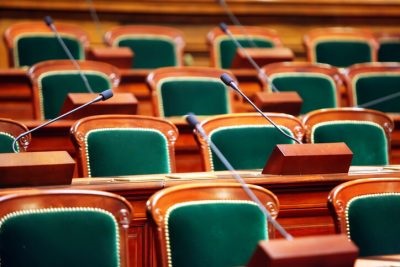The day-to-day of politics is often centred on personalities and positioning. Essentially, who has power and influence or who is on their way out. The focus is then on the cabinet as one of the embodiments of power. But is worth thinking about the elements that shape a PM’s cabinet.
The announcement of a new cabinet or a reshuffle is always a way that a PM can demonstrate their ultimate power, patronage. All ministers ultimately owe their positions to the PM. They can though end up in a cabinet, or in a more junior ministerial position as a precursor to cabinet membership, for a variety of reasons.
It was only recently that I reflected on all these various points as speculation about a reshuffle started to mount, so I thought I would share them.
In the first place, a cabinet can only ever be a snapshot in history. It reflects the issues, personalities and pressures of the time. So it makes perfect sense that a PM needs to update the team at regular intervals. The current cabinet, for instance, was reflective of the immediate circumstances following a general election win and all that came with it – cement gains across the Red Wall, deliver Brexit etc.
But what are some of the considerations that go into a decision about a ministerial position?
- Internal political considerations – balancing factions, rewarding them or seeing them off;
- Personal considerations – good personal relationships with the PM or seen as a team player that can get the most out of a department;
- Competency – someone who is good at delivery or could work on a particular challenge (which could be focused on a particular policy issue);
- Firewall – offers protection for a PM;
- What the country needs – chimes with the mood of the country or reflects / embodies an issue (such as Brexit or law and order);
- Experience – appointed, often to a more junior position initially, to gain experience so they can be brought on a later date;
- Rising star – there is pressure to get them on the team early because of their previous experience or profile;
- To reward loyalty – to the government, party or to the PM themselves;
- Forthcoming political needs – to mark a change of tone or approach and provide a boost around, for instance, elections; and
- To appease the media – commentators will sometimes get behind an individual, or may be encouraged to do, so to keep them happy an appointment needs to be made.
The flip side is that cabinet’s often need to be changed if a minister fails to deliver, is involved in some sort of scandal, resigns (less frequently nowadays), is sacked (also seemingly less frequent) or simply decides to step away having done a good job. This opens up the space for a PM to make changes. There will also be the occasional sacrificial lamb when a change is needed, maybe following an election defeat, to mark a change of approach.
That may all be fine but what relevance is that all to public affairs? The first and obvious place to start is that we are always focused on the people making the decisions so with ministerial positions come responsibilities for policy areas. But by also thinking about why they are in the positions they are in, and what their future priorities might be, we can engage with them more effectively. Try to think about the motivations, not just the position they hold.
I am bound to have missed some reasons out so I would be happy to hear other ideas as well.
The better we know and understand a cabinet, the better we can deliver our public affairs advice.

